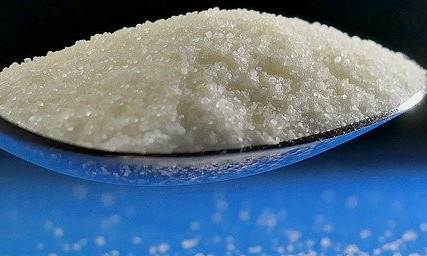 Potasium and Sodium +
Potasium and Sodium +

Ratio
Many people don’t realized the importance of potassium/sodium ratio intake. Potassium is a vital mineral to the body. Yet, more than half of the world’s population are deficient of this crucial mineral. Most of the health related problems could be the result of low intake of potassium. It can help regulate many bodily functions on a daily bases. Potassium needs to be balanced with other minerals such as sodium and calcium to get the full benefit. There are foods that provide the necessary daily amount of potassium. There are also ways to get potassium in supplemental forms. The recommended daily amount of potassium/sodium should be 4 to 1 ratio.
The need for potassium
Potassium is a very important mineral for the body. It can act as a form of electrolyte and so is sodium. It regulates sodium and keep it from damaging vital organs like the heart and kidney. Too much sodium can increase water level that makes the heart works harder which will increase your blood pressure and the increase of kidney stones. The same goes for potassium if you have excessive amount, it can increase heart attacks or death and cause hyperkalemia to occur. Potassium and sodium interact with each other which resulted in making the nerves and muscles to work at the most optimal level. The calcium role is to sustain the ion charges in the cells that are given off by Potassium and sodium.
Different forms of potassium
There are many different forms of potassium. There are organic and inorganic forms. The organic ones can be utilized by the body easily while the inorganic ones cannot. The most used organic potassium are potassium bicarbonate, phosphate, chelate, citrate, aspartate, Chloride, orotate, and gluconate. The potassium nitrate and chlorate are inorganic which are used for manure and for other applications. The inorganic ones are not to be consumed.
The potassium and sodium ratio
The Potassium and sodium work best to give your body the needed supply of electrolytes. The ratio must be just right to do so. The ideal amount of potassium and sodium is 3:1. If you take 4500mg of potassium a day, you will need 1500mg of sodium for the right balance. Athletes may need more like 6000mg of potassium to 3000mg of sodium. Given the appropriate amount needed, most of the world’s population is on some sort of deficiency. Because of this deficiency, it is responsible for about 90-95% of strokes and high blood pressure. Meaning their sodium intake is way higher than their potassium intake. It’s like the ratio in reverse but bad for the body. The inappropriate ratio amount of potassium/sodium can also resulted in adrenal fatigue, Chronic stress, and adrenal insufficiency.
Keeping the potassium/sodium ratio level
Keep the potassium /sodium ratio level can be a challenge. If we know the amount in the foods we eat, we can manage our intake at the necessary ratio. This will have positive effects on the body. Both potassium and sodium have opposite effects on the heart. But higher Potassium and lower sodium(the right ratio) can help assist in removing wastes from the kidney, normalizes blood pressure, sustained the right amount of fluid including electrolyte balance, promote heart health, crucial for metabolizing protein, fats, carbohydrates, maintaining calcium level, help with energy production, can aid in weight loss, regulate sugar level, direct proper nerve impulses, help with muscle contraction, manage the transfer of nutrients, stimulant for certain enzymes, assist in learning and memory, regulate the acid-base balance in the body, promote normal bowel movement, and they also help with wastes removal from the body.
To get the most of the potassium in order to balanced out the sodium you will have to eat fruits and vegetables. There are plenty of good sources of fruits, vegetables, some fish, and from some meat to get it from. You can find these at your local produce or grocery store. Here are some examples of good sources of potassium and sodium.
Fruits: Most common ones are from bananas, raisins, dried apricots, avocados, cantaloupes, honeydew melons, plums, oranges, apples, strawberries, mangoes, pineapples, dried figs, peaches, papaya, prunes, and dates.
Vegetables: Most common ones are from beets, broccoli, celery, carrots, yams, potatoes, cauliflower, mushrooms, sweet potatoes, kale, Swiss chard, Brussels sprouts, spinach, turnips, green peas, radishes, Chinese cabbages, and asparagus.
Fish: Most common ones are from halibut, sockeye salmon, wild rainbow trout, Chinook salmon, cod fish, Red snapper, and tuna. Just make sure that they are all wild caught.
Meats: Most common ones are from pastured poultry, grass-fed beef, grass-fed lamb, pastured pork, game meats, goat meat, and bison.
My take on potassium/sodium ratio
The best way to get enough potassium is from fruits, vegetables, fish, and from some meat sources. Supplemental form should be your last source if the natural form can’t be met. I will have to agree that it can be a challenge to get the optimum daily requirements of potassium/sodium ratio. The only thing that was hard for me before I first started, was to get adjusted to the daily intake requirements ratio. After a week or so, I became aware of the amount I was taking in. But before that, I was counting every intake which was a bit pain in the neck.
Once you have an idea of the amount of potassium/sodium intake on a daily bases, you do not need to count or tally up every food or consumable product before you eat them. It should be automatic on repetition. Unless, you are a person who are very broad at what you eat, then you probably need to have them written down to have the necessary ratio requirements.
I have gone through this adjustment with great results. Through my experience, I am sharing this change. If you have a condition or are on certain medications that would make higher potassium intake a problem to your health, please consult your doctor before following the guidelines to the daily ratio requirements for optimum health. But for individuals, who don’t have an issue with higher amount of potassium/sodium ratio requirements(4500mg/1500mg), and would like to try to reap the benefits, then you might want to try it. Most people seemed to ignore this little advice and pay dearly when their health, that they wish they had made the necessary adjustments before the now painful sadness conditions. Please stay healthy and strong by being aware of what you are consuming. Live to enjoy the best of health and wealth.
Best of health,
john@healthy-and-wealthy-lifestyles.com


I’ve always heard about potassium and how important it is, but never knew that there is a potassium/sodium ratio to look out for and how too much sodium massively contributes to strokes and high blood pressure. I think people put too much salt into their foods which causes them to overload on sodium. Its pretty easy to get enough potassium, I eat a few bananas a day and I’m good. But I think the hard part for me is to cut back on sodium, I really hate bland foods.
Thank you for recognizing how important these two minerals are. The proper ratio is the key to balance the body in many ways. Most people suffered health wise, when all they really need is to adjust to the required daily amount.